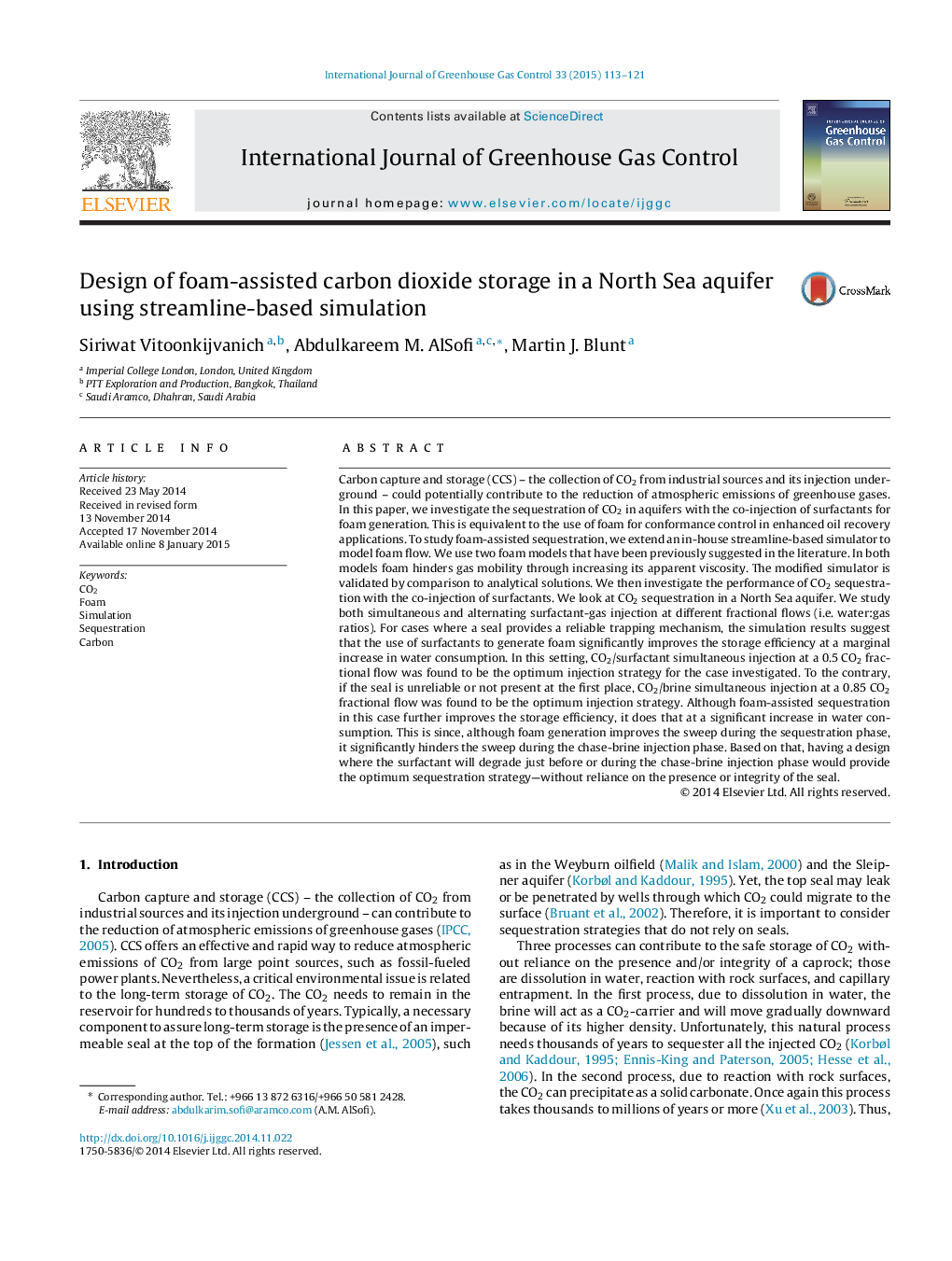| کد مقاله | کد نشریه | سال انتشار | مقاله انگلیسی | نسخه تمام متن |
|---|---|---|---|---|
| 8090981 | 1521988 | 2015 | 9 صفحه PDF | دانلود رایگان |
عنوان انگلیسی مقاله ISI
Design of foam-assisted carbon dioxide storage in a North Sea aquifer using streamline-based simulation
ترجمه فارسی عنوان
طراحی فضای ذخیره سازی دی اکسید کربن در یک آبخوان دریایی در شمال با استفاده از شبیه سازی ساده
دانلود مقاله + سفارش ترجمه
دانلود مقاله ISI انگلیسی
رایگان برای ایرانیان
موضوعات مرتبط
مهندسی و علوم پایه
علوم زمین و سیارات
فرآیندهای سطح زمین
چکیده انگلیسی
Carbon capture and storage (CCS) - the collection of CO2 from industrial sources and its injection underground - could potentially contribute to the reduction of atmospheric emissions of greenhouse gases. In this paper, we investigate the sequestration of CO2 in aquifers with the co-injection of surfactants for foam generation. This is equivalent to the use of foam for conformance control in enhanced oil recovery applications. To study foam-assisted sequestration, we extend an in-house streamline-based simulator to model foam flow. We use two foam models that have been previously suggested in the literature. In both models foam hinders gas mobility through increasing its apparent viscosity. The modified simulator is validated by comparison to analytical solutions. We then investigate the performance of CO2 sequestration with the co-injection of surfactants. We look at CO2 sequestration in a North Sea aquifer. We study both simultaneous and alternating surfactant-gas injection at different fractional flows (i.e. water:gas ratios). For cases where a seal provides a reliable trapping mechanism, the simulation results suggest that the use of surfactants to generate foam significantly improves the storage efficiency at a marginal increase in water consumption. In this setting, CO2/surfactant simultaneous injection at a 0.5 CO2 fractional flow was found to be the optimum injection strategy for the case investigated. To the contrary, if the seal is unreliable or not present at the first place, CO2/brine simultaneous injection at a 0.85 CO2 fractional flow was found to be the optimum injection strategy. Although foam-assisted sequestration in this case further improves the storage efficiency, it does that at a significant increase in water consumption. This is since, although foam generation improves the sweep during the sequestration phase, it significantly hinders the sweep during the chase-brine injection phase. Based on that, having a design where the surfactant will degrade just before or during the chase-brine injection phase would provide the optimum sequestration strategy-without reliance on the presence or integrity of the seal.
ناشر
Database: Elsevier - ScienceDirect (ساینس دایرکت)
Journal: International Journal of Greenhouse Gas Control - Volume 33, February 2015, Pages 113-121
Journal: International Journal of Greenhouse Gas Control - Volume 33, February 2015, Pages 113-121
نویسندگان
Siriwat Vitoonkijvanich, Abdulkareem M. AlSofi, Martin J. Blunt,
